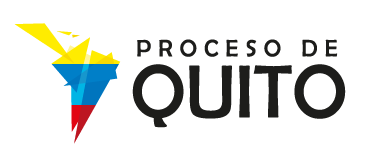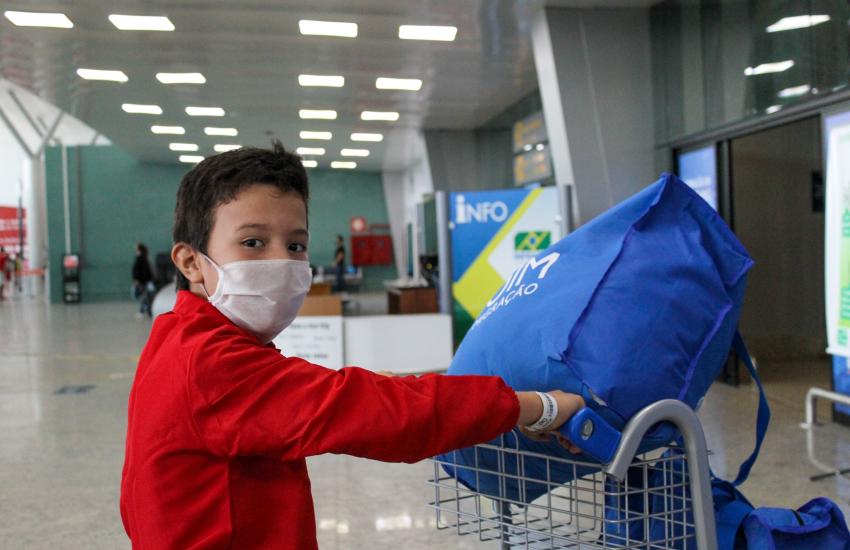A route for the restoration of children's rights
The Operational Guide for Transnational Cooperation in Child Protection, prepared by UNICEF, UNHCR and IOM, reinforces the commitment of Colombia, Canada and Switzerland.
Brasilia, April 6, 2022 — A strategy that contributes to the comprehensive protection of children and adolescents in human mobility and to the integration and consolidation of the life projects of young people and their families was presented by the Colombian Institute of Family Welfare (ICBF) in the workshop of the Child Protection axis.
This implies a Route for the restoration of the rights of Venezuelan refugees and unaccompanied migrants, with the intention that all public and private actors who have responsibilities to guarantee the rights of children and adolescents can articulate and develop their role on this route.
To this end, ICBF, representing Colombia as the leading country on the issue, explained that alliances have been created with collaborators such as UNICEF in order to strengthen channels and efforts for the protection of refugee and migrant children, and seek their regularization.
During 2021, within the framework of the pilot program carried out by the ICBF, with the support of UNICEF, a strategy was carried out that allowed the ICBF to activate routes to assist children and adolescents with threatened and violated rights, in particular children, unaccompanied girls and adolescents, initially in Norte de Santander, Arauca and Casanare.
The strategy was developed through the formation of Migrant Response Teams (ERAM), which have a group of professionals responsible for implementing these actions. During 2021, 154 families were served.
During 2022, it is expected to expand the ERAM strategy in the departments of Norte de Santander, La Guajira and Nariño.
Operational Guide for Transnational Cooperation
Roberto Rodríguez (UNICEF) shared the presentation of the Operational Guide for Transnational Cooperation in the Specialized Protection of Migrant and Refugee Children, prepared by UNICEF with the support of UNHCR and IOM, and part of the agreements of the thematic axis during the last Chapter of Lima. The guide will seek to present the background, progress and next steps for the issue in the region.
The general objective of the Guide is to promote articulated work in the countries of the Quito Process in the protection of refugees and adolescents from Venezuela in processes of human mobility, especially if they are separated from their families in different countries or in vulnerable conditions.
According to Rodríguez (UNICEF), an important point is the compilation of good practices in transnational protection for Venezuelan migrant and refugee children, such as cross-border articulation in resolution cases between the ICBF (Colombia) and the MIES (Ecuador); and between MIES (Ecuador) and MIMPV (Peru). In addition to cooperation between States under the Hague Conventions on Children, for example, the Convention on Jurisdiction, Applicable Law, Recognition, Enforcement and Cooperation in Matters of Parental Responsibility and Measures for the Protection of Children (1996) and cooperation between States of the region for the protection of children and adolescents who are victims of human trafficking.
Projects of Groups of Friends
The Group of Friends was represented at the session by Canada and Switzerland, who reinforced their commitment to the protection of children and adolescents in the region.
Under Canadian policy, the protection of children and adolescents is a priority, and seeks to provide safe futures and environments to reach their full potential.
Leidy Heredia, representative of Canada, assured that it is a pleasure to support strong partners and projects such as the Regional Project for the Protection and Equal Opportunities for Venezuelan Children on the Move. This project is carried out in Colombia, Ecuador and Peru. Thanks to the work and effort of UNICEF and the countries, it has achieved great achievements.
Reference was also made to the work with the stabilization and integration strategy for migrant adolescents and youth, with the aim of training and updating the route for reestablishing the rights of migrant children and adolescents. Finally, humanitarian crises were also resolved, with the creation of protection centers for children who did not have access to education, food or housing during the pandemic.
Finally, Heredia (Canada) committed to continue working in partnership with UNICEF on a new project that aims to create opportunities for children and adolescents in 5 countries: Colombia, Ecuador, Peru, Brazil and Guyana. With this project, they will implement actions to prevent violence and promote the empowerment of this population. This work will include migrants, returnees and welcoming communities.
In turn, Switzerland develops a regional protection program and presented the first skeleton of the project, which contains ideas that could be interesting for the countries. He explained that Swiss cooperation is in the process of institutional transformation, which, on the one hand, means that the Department of Foreign Affairs has decided to withdraw bilateral support for Swiss development in Latin America by 2024. On the other hand, they are in the process of internally reorganize the Development and Cooperation Agency into a structure that will strengthen the humanitarian, development and peace link, which gives the opportunity to continue working in Latin America.
Thus, a Humanitarian Regional Protection Program was designed with a three-pronged approach and a regional center function. Tania Rohrer, representative of Switzerland, presented the general objective of the Program, which is to contribute to improving the security and living conditions of the most vulnerable people in migratory crises and forced displacement. The geographic focus will be the countries most directly affected by the Venezuelan migration crisis: Colombia, Ecuador and Peru, without excluding the possibility of including other countries in a second phase.
Tools and resources:
+ Agenda, taller protección NNA.
+ Guía Operativa (borrador).
+ Nota Conceptual taller protección NNA Brasilia 2022.
+ Presentación: Cooperación regional para la protección integral de niñez y adolescencia migrante y refugiada venezolana.
+ Presentación Guía transnacional.
+ Presentación Taller Temático Protección de Niñas, niños y Adolescentes.


